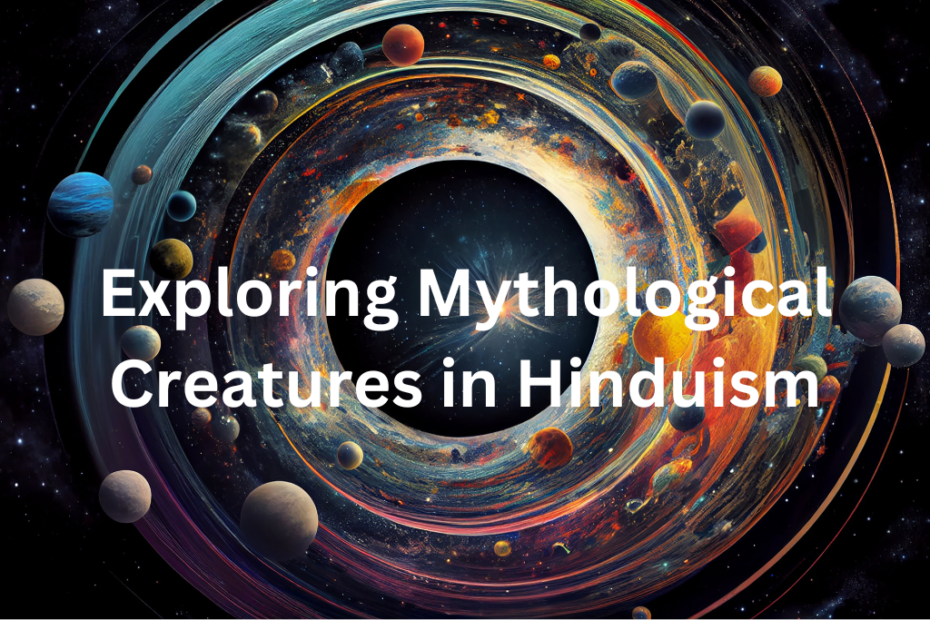Mythological Creatures in Hinduism
-
Makara: The Oceanic Marvel
Makara, with the body of a fish, elephant trunk, lion feet, monkey eyes, pig ears, and peacock tail, symbolizes Capricorn in the zodiac.
It’s Goddess Ganga’s mount and Varuna’s emblem.
-
Rainbow Fish: A Vibrant Legend
An enormous fish in Hinduism, the Rainbow Fish, consumed Vishnu’s avatar and Buddha’s enlightenment.
Its scales, red like fire, blue like ice, green like grass, and yellow like lightning, fed a nation for a year.
-
Navagunjara: The Divine Hybrid
Navagunjara, from Mahabharata, combines nine creatures: chicken head, elephant, tiger, deer feet, human arm, peacock neck, bull back, lion waist, and snake tail.
-
Sharabha: Lion-Bird Protector
Sharabha, part lion and bird, tamed Narasimha, Vishnu’s fierce avatar.
It’s an eight-legged beast, mightier than lions and elephants, mentioned in Shaiva texts.
-
Yaksha and Yakshini: Nature Spirits
Yaksha, nature spirits, govern hidden treasures.
Yakshini, the female form, can be benevolent or malevolent, often appearing in Hindu, Jain, and Buddhist lore.
-
Kamadhenu: The Divine Cow
Kamadhenu, born from the cosmic sea or Daksha’s daughter, represents limitless abundance.
She provided endless milk, demanding respect in return, often associated with Vashista or Jamadagni.
-
Aditi: The Boundless Mother
Aditi, meaning ‘Infinite,’ is the source of all wonders.
She’s the mother of gods, linked to space and mystic speech, symbolizing the unity of all things.
-
Pishachas: Flesh-Eating Demons
Pishachas, demonic beings made by Brahma, feed on human energies.
They can assume various forms, manipulate thoughts, and cause diseases, curable through specific mantras.
-
Pashupati: Protector of Animals
Pashupati, a Shiva incarnation, guards animals in forests.
He introduced arts like music and dance to humanity and is revered as the lord of forest spirits, the Vidyesvaras.
-
Shesha Naag: The Thousand-Headed Serpent
Shesha Naag, or Ananta, symbolizes endless time.
It serves as Vishnu’s bed and Balarama’s form.
When coiled forward, creation occurs; when backward, the universe dissolves.
-
Matsya: The Divine Fish
Matsya, Vishnu’s fish avatar, warned Manu about an impending deluge.
It guided him to preserve life and grains in an ark, safeguarding them from the cataclysmic flood.
These mythological creatures showcase the richness of Hindu folklore, each with its unique symbolism and significance.
